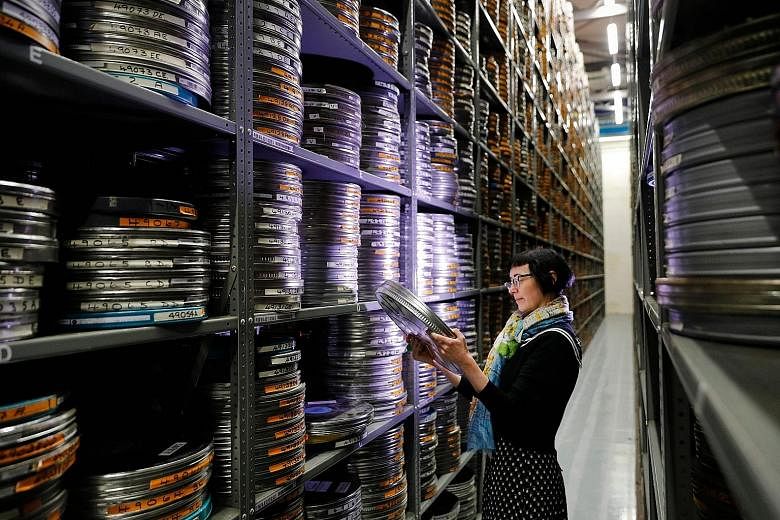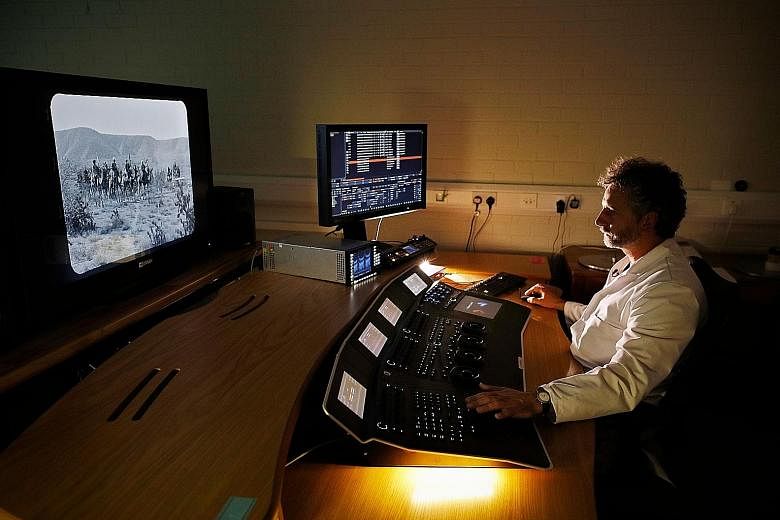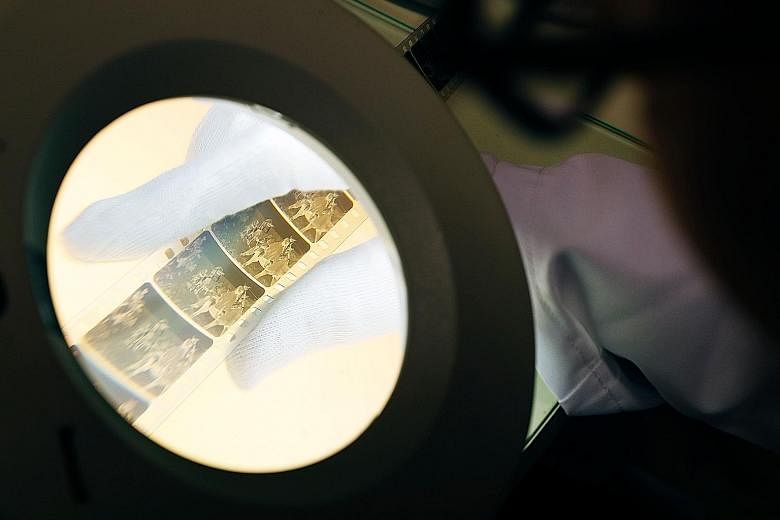LONDON • In a refrigerated vault outside London filled with old film reels, a team of curators is giving forgotten masterpieces of early cinema history a new lease of life.
A chemical smell hangs in the air at the British Film Institute's National Archive, where some 250,000 reels of old film are stacked floor-to-ceiling.
"As we're restoring them, we're pulling back the veils of history and we can see much more clearly than we used to," curator Bryony Dixon said in his workplace in the town of Berkhamsted.
A selection plucked from the shelves is being showcased at the institute's London Film Festival, including a tale about the heartbreaking Indian love story of the Taj Mahal mausoleum.
Shiraz: A Romance Of India was screened at a gala over the weekend for the first time since its release in 1928, after months of restoration.
"It's beautiful, it's dramatic, it's got exciting locations and great acting. And it's unique - there are almost no surviving Indian films from that era, so it's very special," Mr Dixon said.
A score by composer Anoushka Shankar, daughter of late Indian sitar maestro Ravi Shankar, has also been added to the silent film.
The institute's curators have restored a wealth of films, including Alfred Hitchcock's nine surviving silent movies and footage of a legendary Everest expedition in 1924 in which two climbers died.
Despite technological leaps, preparing the film begins with it being checked by hand.
"There will be a lot of manual repair on the original film copies, using tape to make sure the films can pass through cleaning machines, and also through the scanner," said Mr Kieron Webb, the archive's film conservation manager.
The team used the original camera negative of Shiraz, along with a copy made decades later, which were combined digitally to obtain the best images and restore tens of thousands of frames.
"The removal of scratches and dirt; de-flicker, which makes the image look more stable; reduce the light and darkness changes in some shots," said Mr Webb, summarising hundreds of hours of work.
Mr Ben Thompson, an image quality section leader, demonstrated how to remove a scratch from a Shiraz scene without accidentally brushing out a horse's leg.
Restorers have also sharpened the images, which he noted creates more work. "As soon as you improve the sharpness of the image, it reveals and brings into sharp focus the detail but also the defects."
Digital techniques, which have replaced much of the old photo-chemical processes, have enabled restorers to become more precise in their work and upgrade every single shot in a film such as Shiraz.
The Indian film is nearly 90 years old, but the institute also holds movies going as far back as the 1890s.
Despite the films' age, curators said they were easier to restore due to their brevity. "Some of them are only a minute long," Mr Dixon said.
"With the 1920s, it gets much more complex because the films get longer and they have a grammar to them, which means if you're missing part of the film print, you have to sort of compensate in order to make it understandable for the audience."
Colour and sound add further layers of complexity although silent films are themselves problematic because they often lack any documents to dictate the speed they should be shown at.
Restoration is a costly endeavour and the archive relies on public funds and private donors as well as ticket sales from screenings.
But the restorers said the cultural value is boundless, giving audiences a window into an unseen age and places that have since disappeared.
"Fiction film, or non-fiction film, is this fantastic record of the whole of the 20th century that people can look at. It is, for those who care to look, a real experience," said Mr Dixon.
AGENCE FRANCE-PRESSE



